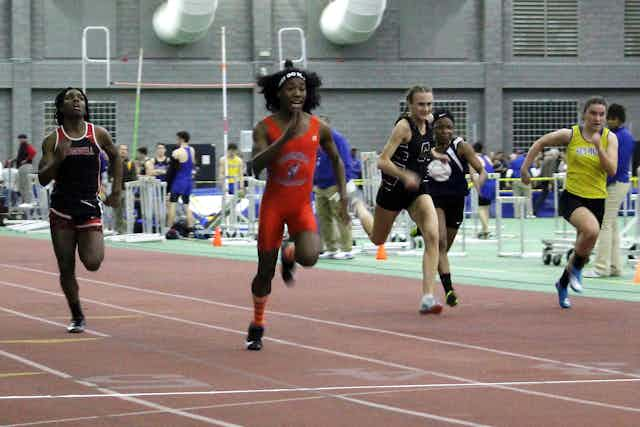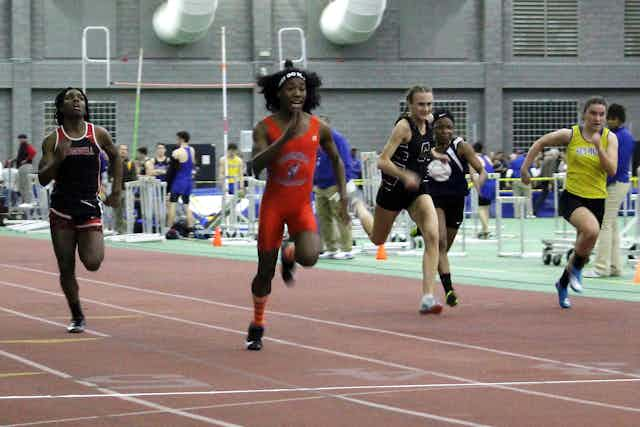

Deciphering Policies on Transgender Athlete Rights: A Closer Look at Conflicting Perspectives
Transgender Athletes and the Scary Challenges they Face
Transgender athletes have found themselves at the heart of a delicate intersection where sports, politics, and human rights collide. In a tangle of policies, these dedicated individuals often find themselves twisting and turning through a complicated maze of regulations and norms that seem to be ever-evolving.
Recent shifts in national policy mandate, such as President Donald Trump’s Executive Order on Combating Race and Sex Stereotyping, have fueled this ongoing debate further. In many cases, the changes implemented have been seen as off-putting and nerve-racking for athletes in question.
A Dive into the Role of State Level Sports Associations
Poking around this complex issue, one begins to understand the critical role of regional governing bodies like Minnesota’s State High School League (MSHSL) in shaping policies around transgender athletes’ participation.
Despite the recent federal order signed by Trump, the MSHSL, along with associations in some other states, has decided to dig into its resolve to allow transgender athletes to compete in prep athletics. In an email to member schools, the association emphasized this stance, stating its belief that students should be allowed to participate in a manner consistent with their gender identity, a right safeguarded by the Minnesota Human Rights Act and the state constitution.
The Tricky Part of Federal versus State Laws
The governing body acknowledged the tangled issue surrounding the variance between state law and the president’s executive order. According to MSHSL, their line of action is significantly dictated by the state’s anti-discrimination laws, which unequivocally oppose discrimination based on gender identity.
Despite their clear stance, navigating the nitty-gritty of the policy is proving to be a Herculean task for many sports organizations, filled with little twists and potential legal battles. Nevertheless, the MSHSL’s decision represents a beacon of hope for athletes like Sawyer Totten, a transgender athlete who found support in his cross-country skiing team during his high school days in Vermont.
NCAA and Their Response: Mixed Reactions from Transgender Athletes
Trump’s executive order was granted a swift response from the National Collegiate Athletic Association (NCAA), as it revised its policy to restrict women’s college sports to athletes designated female at birth. The new policy, received with both positive and negative feedback, will have a vital impact on transgender athletes across the country.
While this change carried sadness and anger for athletes like Totten, it highlighted a lived reality for many – the fact that their participation in sports is riddled with tension. Totten, now a college student, said, “I had nothing but positive experiences as a trans athlete in Vermont but it’s going to vary state by state”.
Transgender Risks in Sports and the Need for United Policies
Studies suggest that the number of transgender athletes competing at the high school and college level is relatively small. Yet, this little twist has phenomenally influenced the world of high school and college sports, primarily through policies and individual experiences.
Today, as we steer through the world of transgender athlete rights, one thing is clear. The need of the hour is pleas for concerted efforts to establish policies that not only respect unique athletic identities but also ensure fair competitive opportunities for all.
Whether it is navigating your way through state laws or specific policies of sports associations, the journey to transparency, equality, and acceptance is still at its budding stage. However, one thing is clear – the drive for fair and inclusive opportunities for all athletes is gathering momentum.
Why Proactive Adaptation Should be a Must-Have Approach for All State Associations
All these complications surrounding transgender athletes’ rights indicate a super important need for each state’s sports association, like the Illinois State High School Association (IHSA), to take a proactive approach. Adapting their guidelines to accommodate every subtle detail of evolving laws and developing research is vital to ensuring fair competition in the sports sphere.
As we watch this intensely evolving scenario, it is essential to remember that the story’s core revolves around athletes like Totten who find their sense of belonging and self-expression through sports. In the words of Totten, “My coaches and my teammates were all super supportive of me, and I never had any issues when it came to competing. That was my experience as a trans male athlete.”
That’s what every athlete, trans or cisgender, wants – to compete and express themselves without facing discrimination. It’s not just about winning or losing; it’s about the right to be part of the game.
Method within the Madness: Finding a Clear Path in a Confusing Policy-wrapped World
So as we take the wheel and continue sorting out state legislation, federal guidance and individual experiences, it becomes apparent that no two transgender athletes’ journeys are the same. Adjusting our perspectives, accommodating fine shades of differences, and reinstating inclusive policies – that’s the necessary path we must all figure out for a fair and equitable future in sports.
Whether it’s about the NCAA bending its guidelines, high schools grappling with Trump’s executive order, or athletes like Totten sharing their confusing bits of the journey, one thing rings true – these narratives will continue dictating the future of sports and transgender athletes’ place within that.
Originally Post From https://www.edgemedianetwork.com/story/337830
Read more about this topic at
Transgender athlete controversy sparks opposing protests …
Controversy after volleyball teams opt out of SJSU matches …


